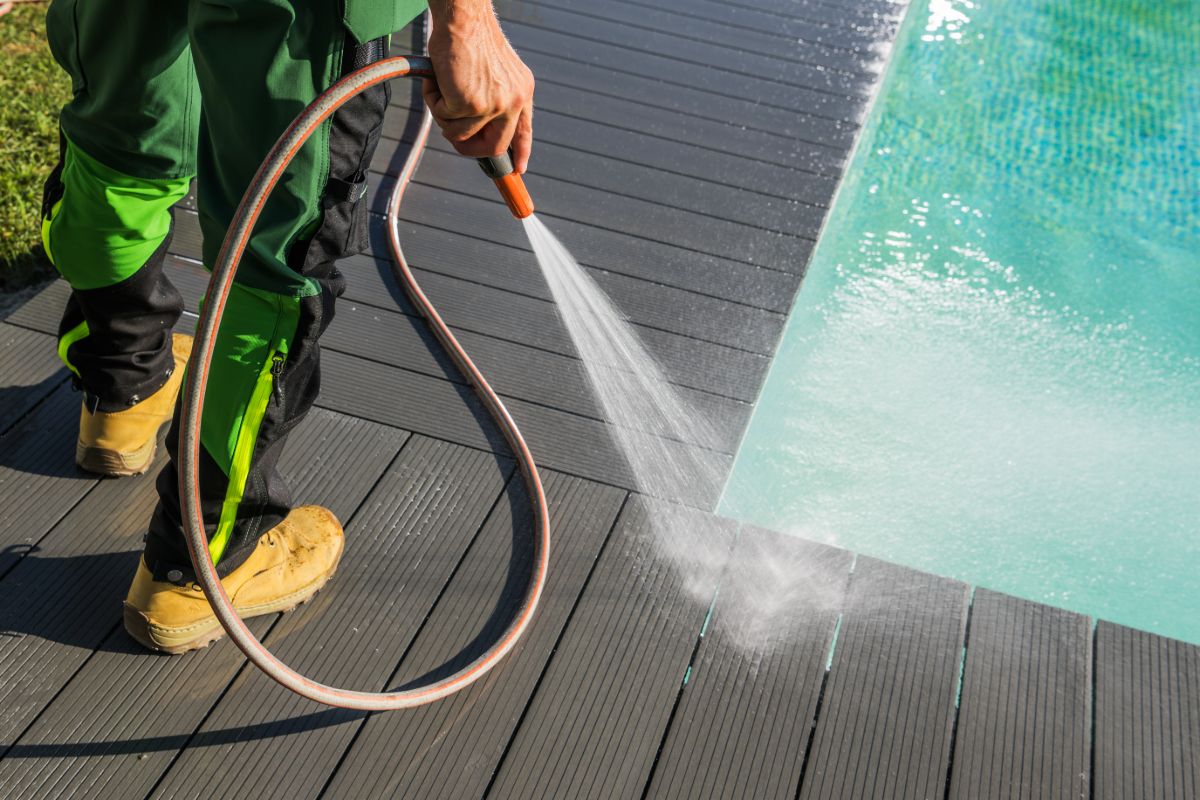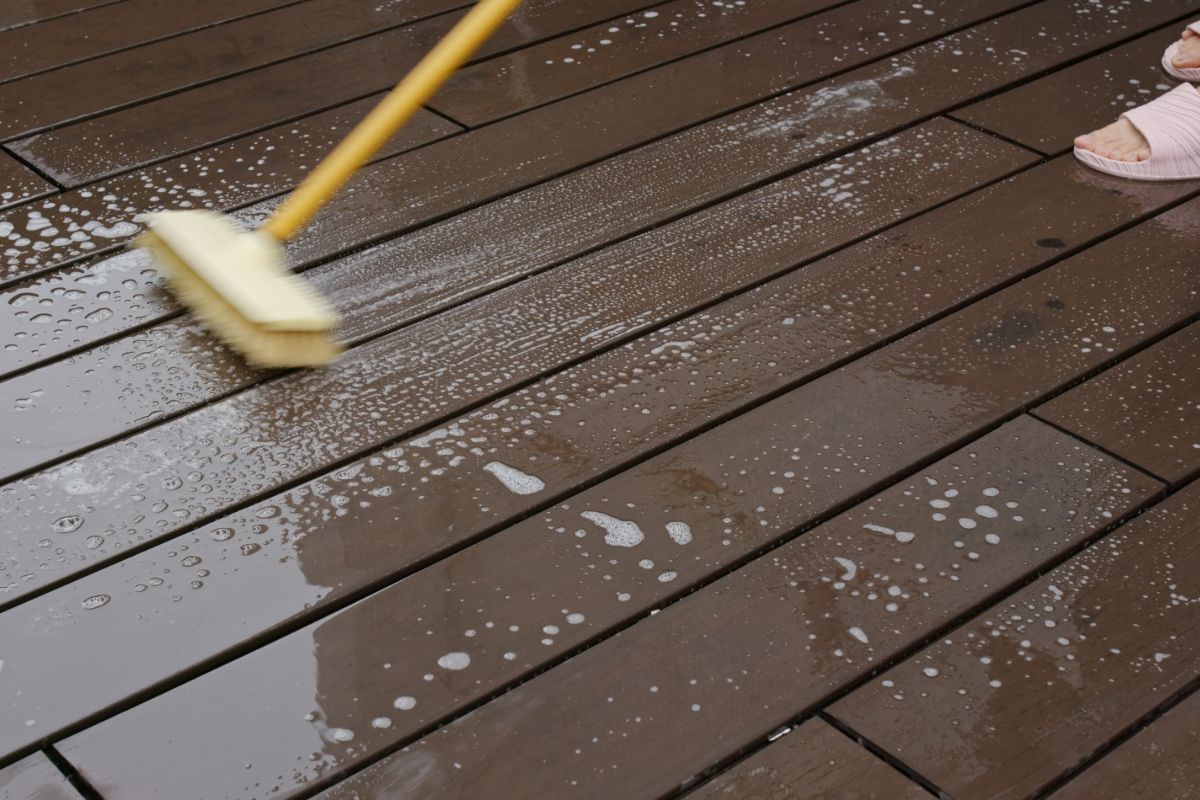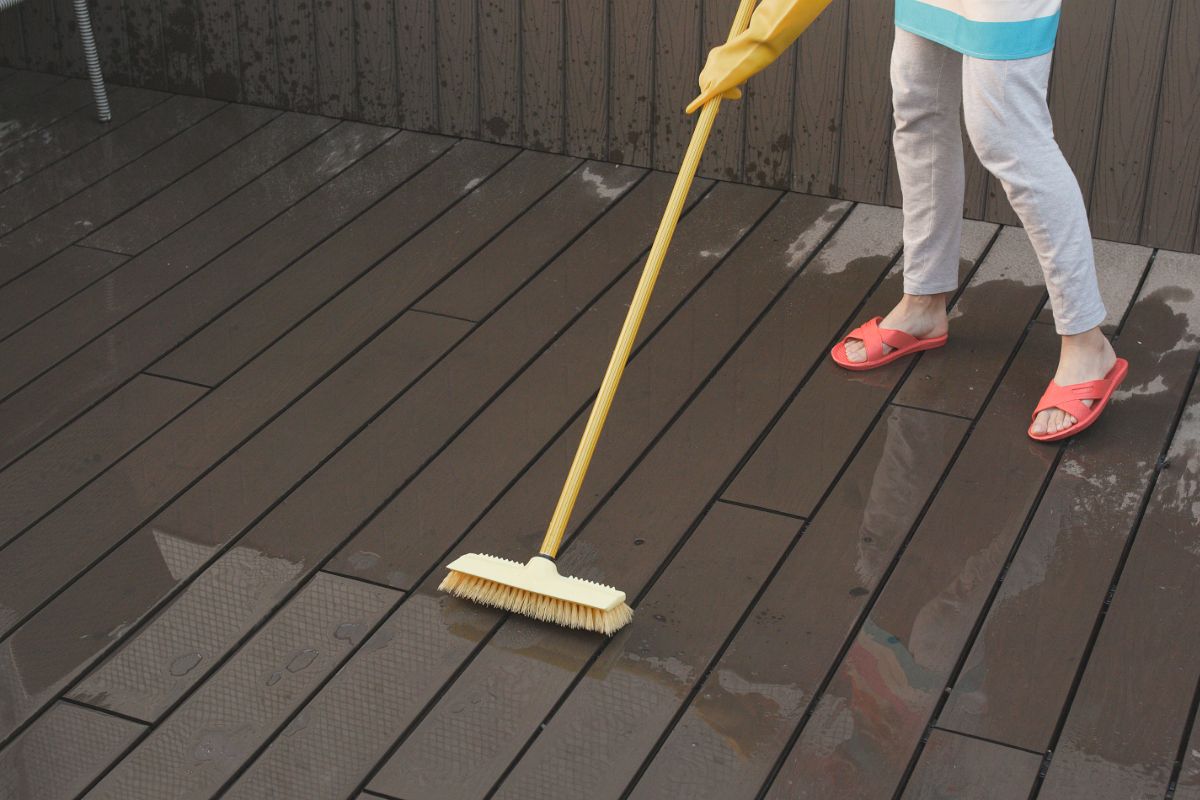July 16, 2025
How to Maintain and Clean Your Polypropylene Decking

Overview
- Sweeping often removes debris that can lead to stains or surface damage, especially in high-traffic areas.
- A mild soap and water solution is enough to clean polypropylene decking without causing wear or discoloration.
- Avoid using bleach, acetone, or other strong cleaners that can harm the deck’s surface or reduce its lifespan.
- Rinse spills promptly to prevent stains and clean debris from gaps to maintain drainage and prevent mold buildup.
Polypropylene decking is a popular choice for outdoor applications thanks to its durability, moisture resistance, and low-maintenance properties, and at Richfields, we provide high-quality polypropylene decking for companies in the USA that are built to last.
However, like any surface exposed to the elements, it still requires regular care to perform at its best. That’s why in this article, we’ll explore how to maintain and clean polypropylene decking, covering simple but effective practices that help extend its lifespan and keep it looking its best.
Outdoor spaces naturally collect debris such as leaves, dirt, and dust, which can lead to surface staining or mildew growth if left unattended. By sweeping regularly, you help prevent buildup that can become more difficult to clean over time.
In commercial or high-traffic areas, daily or weekly sweeping can go a long way toward reducing wear and tear. While polypropylene is resistant to weathering, consistent care helps preserve its original look and performance.
Sweeping also gives you the opportunity to inspect your deck for early signs of wear or damage. Spotting issues early makes it easier to carry out minor repairs before they become costly or impact the safety of your outdoor space.

A basic wash with mild soap and water is often all you need to refresh your polypropylene decking. Because the material is non-porous and moisture-resistant, dirt and grime sit on the surface, making them easy to remove with a simple cleaning solution.
You can do this by mixing a few drops of dish soap with warm water in a bucket and using a soft-bristle brush or sponge to gently scrub the surface. Focus on any areas with visible stains or buildup, and be sure to follow the direction of the decking boards for a consistent finish.
For routine cleaning, this mild method is effective and safe. It’s especially recommended for both residential and commercial applications where maintaining aesthetics without damaging the material is a priority.
While polypropylene is known for its chemical resistance, not all cleaners are suitable for deck maintenance. Harsh substances like bleach, acetone, or industrial degreasers can cause surface discoloration or weaken the deck over time.
That’s why it’s also a great idea to stick to pH-neutral cleaners or manufacturer-recommended products. These solutions are formulated to clean without compromising the structural integrity or appearance of polypropylene materials.
Using the wrong product can void your warranty or lead to irreversible surface damage. If you’re unsure about a cleaning solution, test it on a small, inconspicuous area first before applying it across the deck.

Even though polypropylene decking resists stains, immediate rinsing after spills is still best practice. This applies to common substances like food, beverages, oil, or plant matter, especially in outdoor dining or event spaces.
Spills left to sit can cause temporary discoloration or make the surface slippery, increasing the risk of accidents. A quick rinse with water helps maintain safety and hygiene while protecting the finish.
Prompt attention to spills not only keeps the deck looking clean, it also reinforces a proactive maintenance routine that can extend the life and functionality of your decking system.
Polypropylene decking often features interlocking panels or slatted profiles, which can collect debris between the gaps. Over time, this buildup can hinder drainage or encourage mold growth, especially in humid environments.
That makes it even more important to regularly check these areas and remove leaves, dirt, or other organic matter. Here are some simple items you can use that you can easily find in your home:
Learning how to maintain and clean polypropylene decking is essential to preserving its durability, appearance, and performance. While this type of decking is known for being low-maintenance, it still benefits from routine care, like sweeping, gentle washing, and occasional inspection of hard-to-reach areas.
Make sure you’re getting the most out of your investment by choosing high-quality polypropylene decking from a trusted supplier. At Richfields, we manufacture durable, customizable plastic products—including decking solutions—that are built to last.
Contact us today to learn more about our offerings and how we can support your next project.